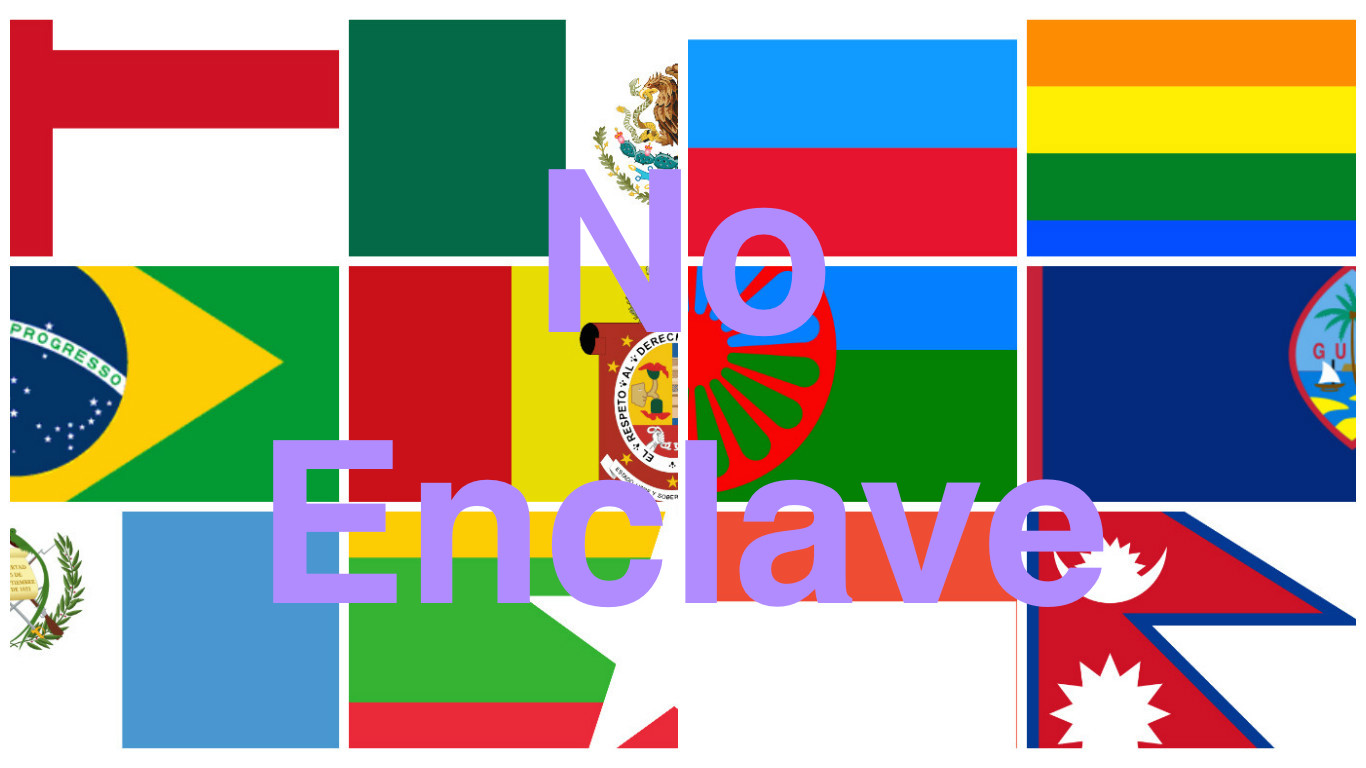
As of 2015, an estimated 48.4% of Angelenos were “Hispanic of any race.” The majority of Hispanic and Latino Angelenos are of Mexican heritage but the region is also well known for being home to the largest populations of Salvadorans and Guatemalans outside of their home countries. Often overlooked are the region’s smaller Latino populations, the subject of this series of No Enclave posts written on the occasion of National Hispanic Heritage Month.
*****
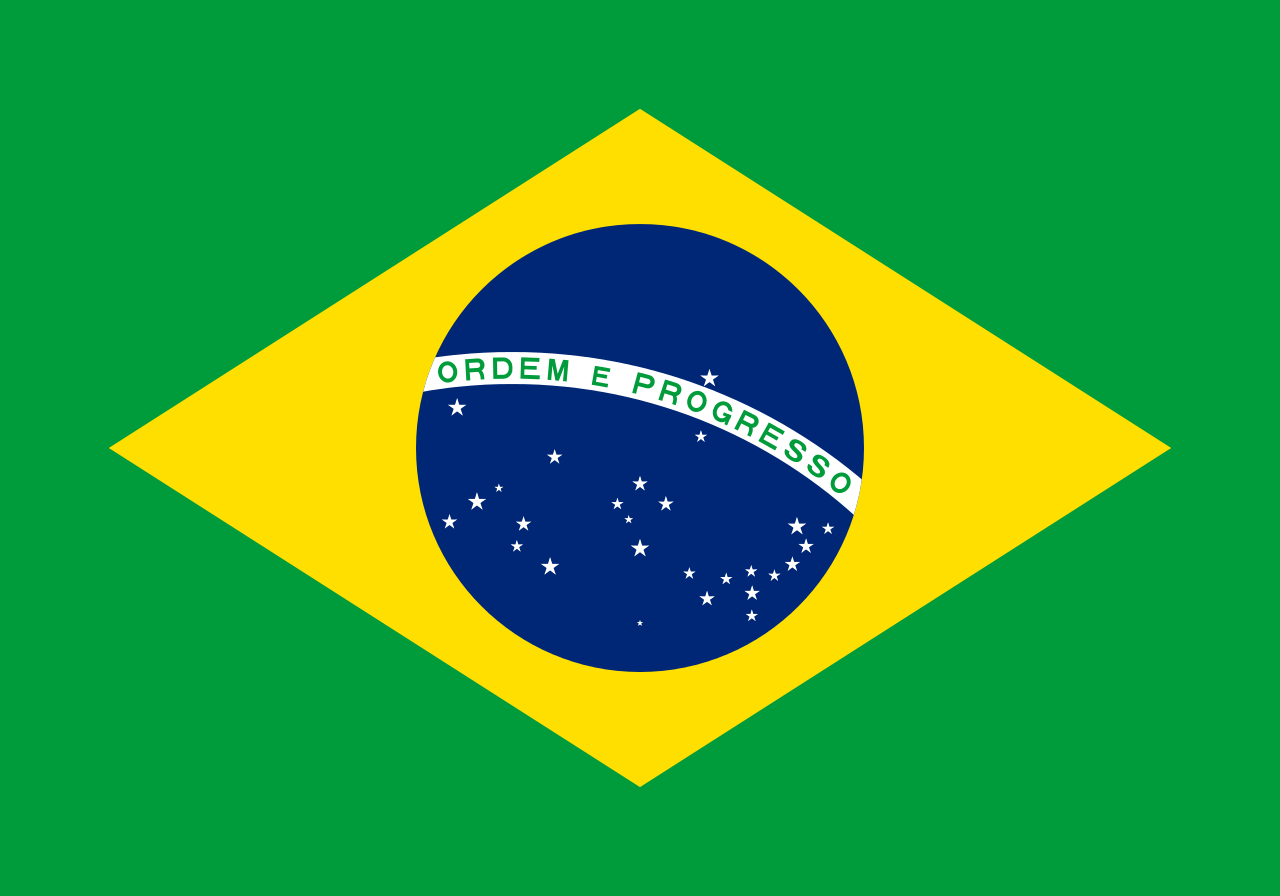
As residents of Latin America, all Brazilians are Latinos. However, as speakers of Portuguese rather than Spanish, they are Lusitanic rather than Hispanic. 15 September – 15 October is National Hispanic Heritage Month, not National Latino Heritage Month, but in the US the related concepts of “Hispanic” and “Latino” are often (wrongly) used interchangeably and I’m using the occasion to explore Brazilian Los Angeles.

Brazil is a multi-ethnic society. The first people to settle the what’s now Brazil include numerous indigenous nations, including the Aimoré, Amanyé, Atikum, Awá-Guajá, Baniwa, Bará, Botocudo, Caeté, Carijó, Charrúa, Enawene Nawe, Goitacá, Guaraní, Kadiwéu, Kaingang, Kamayurá, Karajá, Kaxinawá, Kayapo, Kokama, Korubo, Kubeo, Kulina Madihá, Makuxi, Matsés, Mayoruna, Mbya, Munduruku, Mura, Nambikwara, Ofayé, Pai Tavytera, Paiter, Panará, Pankararu, Pataxó, Pirahã, Potiguara, Potiguara, Sateré Mawé, Suruí do Pará, Tabajara, Tamoio, Tapirape, Temiminó, Terena, Ticuna, Tremembé, Tupi, Tupinambá, Tupiniquim, Waorani, Wapixana, Wauja, Witoto, Xakriabá, Xavante, Xukuru, and Yanomami peoples. Additionally, in 2007, the Fundação Nacional do Índio (FUNAI) reported that there were still at least 67 uncontacted peoples still living in Brazil.
On 22 April 1500, a Portuguese fleet led by navigator Pedro Álvares Cabral invaded what’s now Brazil and took possession of the land in the name of his king. Native people enslaved and used to harvest Brazilwood. Huge numbers of Ewe, Fanti–Ashanti, and Yoruba people, amongst other Africans, were abducted by the Portuguese and forced to work in Brazilian mines and plantations. In fact, nearly 40% of abducted Africans were transported to Brazil. Today, about 8% of Brazilians are of African ancestry.

After the establishment of Brazil, other immigrants came, often from China, Germany, Italy, Japan, Korea, Lebanon, Poland, Spain, Switzerland, Syria, and Ukraine. In the Americas, only the US and Argentina receive more immigrants and São Paulo is noteworthy for having the largest population of Japanese outside of Japan.
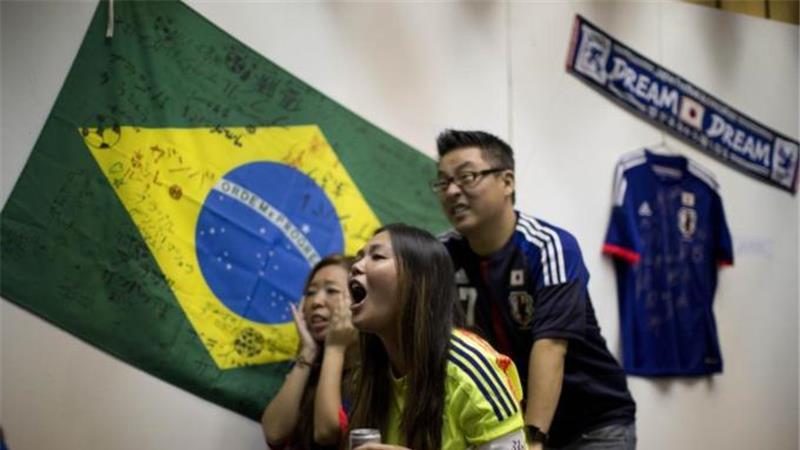
According to the US Census Bureau, as of 2012 there were an estimated 371,529 Brazilian-Americans. The first substantial wave of Brazilian immigration occurred in the 1960s. The economic crisis of the 1980s incited the emigration of 1.4 million Brazilians to other countries. In the US, the largest number settled in the New York City (the only American city home to an official “Little Brazil“). The Boston and Miami metropolitan areas also received substantial numbers. Smaller but still substantial numbers settled around Atlanta, Washington, DC, Houston, Phoenix, and Los Angeles.
The Brazilian Consulate estimates that about 10,000 Brazilians live in the Los Angeles area, with about 30% living in and around Culver City and Palms. Although a stretch of Venice Boulevard between those two Westside communities has for a quarter-century hosted numerous Brazilian businesses and residents, there is as yet no officially designated “Little Brazil.”
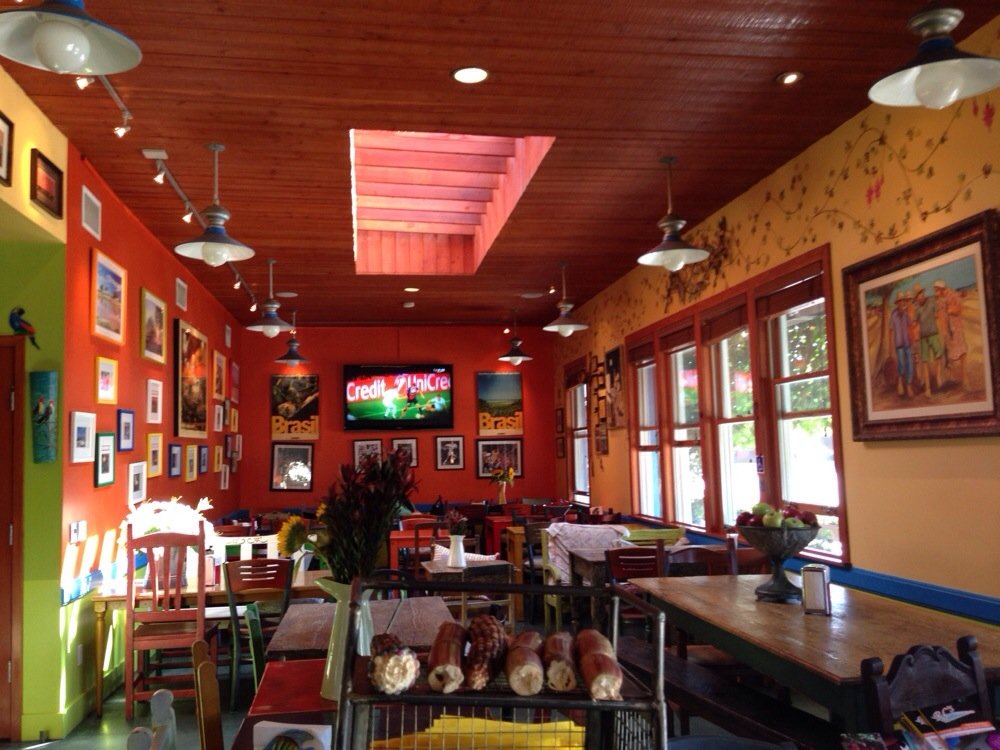
The first Brazilian businesses to open in the area include Bamboo Restaurant and Café Brasil, both of which opened in 1991. In 1994, Monica Burgos opened the boisterous Zabumba nearby, whose joyful chaos occasionally drew me in until the owner was murdered by her husband, Bruce Beresford-Redman (producer of Survivor and co-creator of Pimp My Ride), in 2010. In 2011, Monica’s sister Carla tried to keep the business going as Kikafulô, but it closed in 2012.
Other Brazilian businesses fell victim to the recession but there’s still the Brazilian Mall, so-rechristened around 2007 by then-new owner Marcello Gomez. A few blocks away, Boriscosmetic offers a surgical procedure billed as a “Brazilian butt lift.”
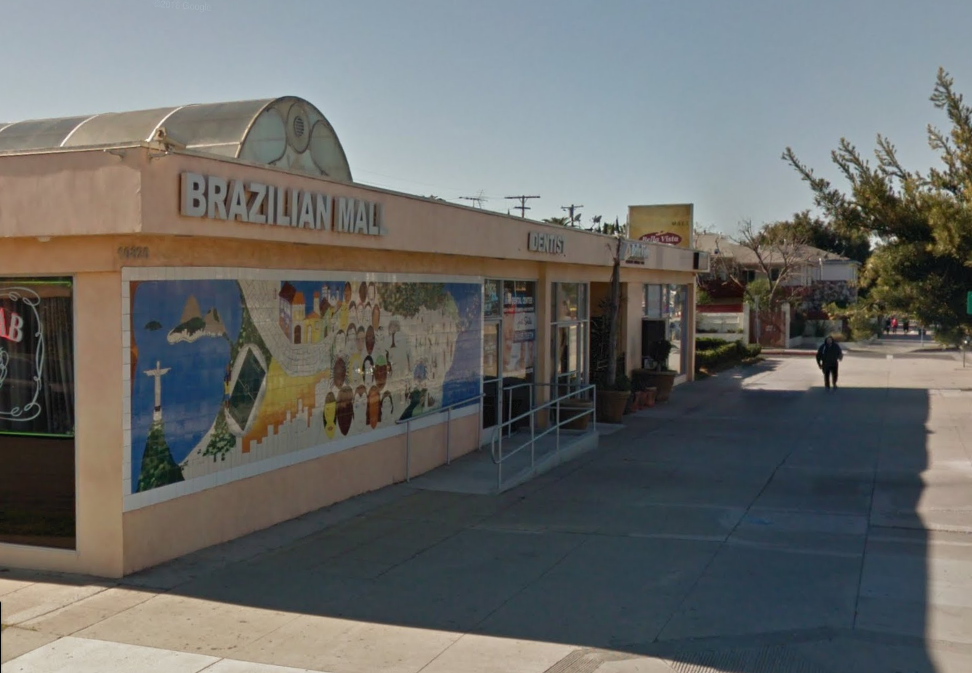
Before moving on, something must be said about the famed Brazilian bunda, the subject of no small amount of attention in the US and elsewhere. Brazilian women are amongst the most frequently exoticized and eroticized of all women in the Western hemisphere and much of the objectification is directed toward the pelvic region. Although invented in New York City, the removal of pubic hair from the labia, perineum, and anus is known as the “Brazilian wax.” One of the most popular variants of women’s swimwear is the buttock-baring Brazilian bikini. The surgical implantation of cohesive silicone gel into the buttocks, coupled with liposculpture, is known as the “Brazilian butt lift.” Despite all of this — and whilst acknowledging that Brazil does lead the world in gluteoplasty — I have no intention of adding business offering Brazilian butt lifts, waxes, or bikinis to my map of Brazilian Los Angeles so please don’t bother suggesting them to me.
BRAZILIAN CUISINE
Brazilian Cuisine is derived largely from a combination of indigenous foods and techniques and those imported from around the world. Regional variations include Center-West (e.g. Goiás), North (e.g Acre, Amazonas, Amapá, Pará, Rondônia, Roraima, and Tocantins), Northeast (e.g. Pernambuco and Bahia), and Southeast (e.g. Rio de Janeiro, São Paulo, and Minas Gerais).

Indigenous ingredients include açaí, cashews, cassava, chili, cumaru, cupuaçu, guaraná, guava, hog plums, maize, manioc, passion fruit, peanuts, pineapples, pinhão, tomatoes, tucupi, ducks, and fish. Europeans introduced wheat, wine, pigs, cows, and dairy products; African (or possibly South Asian) okra is popular and the influence of African cooking techniques is especially evident in Brazil’s coastal states. Asian products popular in Brazil include mangos, oranges, rice, and starfruit. Japanese immigrants brought Japanese techniques and applied them to local dishes like empanadas. Popular North American imports include papayas.
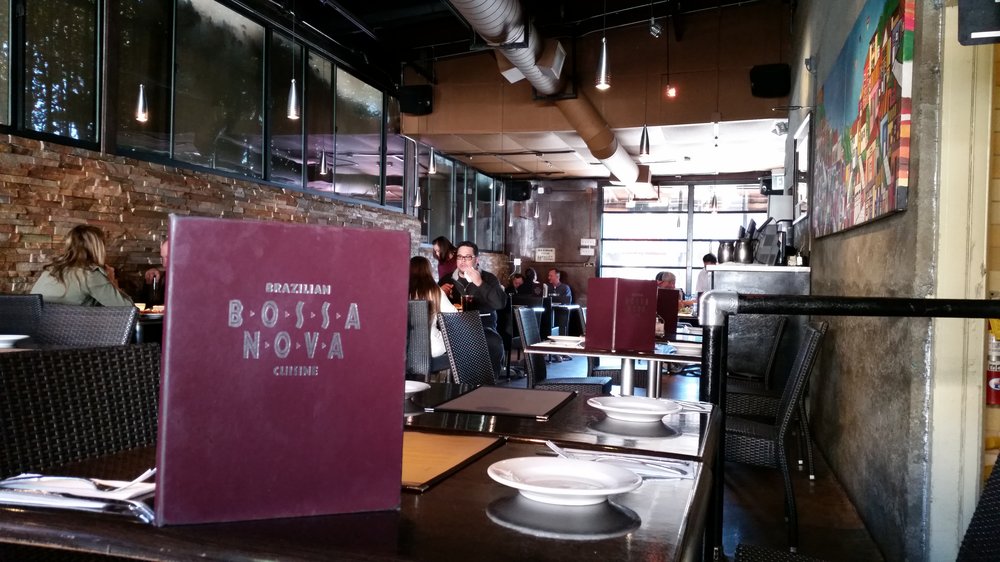
Popular dishes include feijoada (widely regarded as the national dish), acarajé, bobó de camarão, caruru, coxinhas, esfiha, kibbeh, linguiça, misto-quente, moqueca, pães-de-queijo, pasta, pastéis, pato no tucupi , pizza, polenta, rice and beans, risólis, vatapá, and virado à paulista. Cuscuz branco and bolo de castanha-do-pará are popular desserts. The most popular beverages are coffee, cachaça (used to make the cocktail, caipirinha), mate (used to make chimarrão and tereré), fruit juice, beer (mainly Pilsen), rum, guaraná, and batidas.

Local Brazilian restaurants and caterers include Bamboo Restaurant (Palms), Bella Vista Brazilian Gourmet Pizza (Culver City), Bossa Nova Brazilian Cuisine (Beverly Hills, Hollywood, Rancho Park, and West Hollywood), Café Brasil (Culver City and Palms), Cantinho Brasileiro (Palms), Fogo de Chão Brazilian Steakhouse (Beverly Hills), Green Field (West Covina), Kravings (Tarzana), M Grill (Wilshire Center), Mesa Brazilian Eatery (Westwood), Pampas Grill (Culver City and Fairfax), Porto Alegre Churrascaria (Pasadena), Samba Brazilian Steakhouse (Redondo Beach and Universal City), Samba Grill (the Fashion District), Tropicalia (Los Feliz), Wood Spoon ((New) South Park). The Ta Bom Truck and Tender Grill Gourmet Brazilian Kitchen, being a food trucks, can be found at various locations. Adriano Pereira Nasal founded the chain, Açaí There’s also a Brazilian chain, Ubatuba Acai, founded in 2013 by Ubatuba-born Daniella Demetrio founded Ubatuba Açaí in 2013 There locations in Northridge, Tarzana, San Luis Obispo, Thousand Oaks, and We-Wil.

Even more popular, perhaps, than Brazilian food is Brazilian music and dance, the many forms of which all seem to be entwined with one another. One of the oldest forms of dance in Brazil is capoeira, which is also regarded as a martial art with elements of music. As with many Brazilian cultural expressions, its roots are in the Central African cultures uprooted and transplanted to Brazil during the Transatlantic Slave Trade.

Local capoeira schools include Capoeira Batuque Pasadena, Capoeira Besouro (Santa Monica), Capoeira Brasil East (Eagle Rock), Capoeira Brasil Los Angeles (Mid-City), Capoeira Los Angeles (Sherman Oaks), and United Capoeira Association (Atwater Village, Glendale, and Silver Lake).
Samba is a type of Brazilian music and dance with roots in Central African religious traditions. It developed primarily in the Brazilian state of Bahia and the city of Rio de Janeiro. Locally, there are several dance academies that teach samba dancing (although no exclusively samba-focused studios that I know of). There are also samba dancers for hire, such as Samba Dancers Entertainment Agency‘s Brazilian Samba Angels.
Carmen Miranda was probably the most famous Brazilian-Angeleno of the 20th century. The samba singer, dancer, Broadway actress, film star, and fruit hat popularizer enjoyed massive popularity in the US from the 1930s through the early 1950s. Miranda was born in Marco de Canaveses, Portugal in 1909 and moved to Brazil, where she became a star in the 1920s. She made her Hollywood film debut in 1940, with Down Argentine Way. After that, Miranda went on to make thirteen more films for Hollywood before she grew increasingly dismayed by the limited roles she was offered. A heavy user of alcohol, amphetamines, barbiturates, and cigarettes, Miranda died of a heart attack at the age of 46 in her Beverly Hills home.
In the late 1950s, Brazilian Samba and American jazz-influenced the creation of Bossa nova. Born in the Ipanema and Copacabana bairros of Rio de Janeiro, its influence soon spread to the US where it was embraced by musicians like Charlie Byrd, Stan Getz, and Frank Sinatra. Although The Beatles had previously employed a Latin beat on “And I Love Her,” I can’t think of any rock song of its era which incorporated Bossa Nova to the extent that Los Angeles’s The Doors did with “Break On Through.”

Brazilian Nites Productions was founded in Los Angeles in 1989 by Brazilian dance Patricia Leão. In the late 1980s/early 1990s, America was briefly under the spell of lambada, another dance with African origins, this time closely associated with Pará. In 1990 there were even rival lambada pictures in cinemas — Lambada and The Forbidden Dance — both released in 1990. Brazilian Nites Production was formed to further the popularity of lambada but also annually co-produces (with the Los Angeles County Arts Commission) the Brazilian Summer Festival at the John Anson Ford Amphitheatre. They also produce L.A.’s Brazilian Carnaval, held at several venues including the Hollywood Palladium, RMS Queen Mary, Club Nokia, Conga Room, and El Rey Theatre.
Viver Brasil is another Brazilian dance company, founded in 1997 by Linda Yudin and Luiz Badaro, who also serve as the company’s artistic directors. Initially they were strictly a folk dance company that specialized in the candomblé of Salvador. Nowadays they perform a number of dances, including samba and frevo — a music and associated dance associated with Carnival and originating in Recife.
More recently, Brazilian-Angeleno musicians have included jazz guitarist Gustavo Assis-Brasil, Myspace synth-popper Sky Ferreira, singer-dancer Angel B, rap-rocker Jared Gomes, pianist Thiago Vitorio, producer/engineer Mario Caldato Jr., indie-pop band Blondfire, drummer Tatá Batera, and Patricia Klein (Quiver, Bobsled, PATSY, The Circuit Side, and Sid Brown) who recorded the album, Cometa, as Peek! There’s also a Brazilian group, Little Brazil Trio, composed of three Brazilian Angelenos (Bruno Justi, Marcelo Bucater, and Natália Spadini).





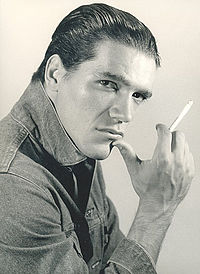

Other Brazilian-Angelenos in the entertainment industry include actors Camilla Belle, Jordana Brewster, Julia Goldani Telles, Maiara Walsh, Regis Terencio, and Sergio Kato; producer Stephanie Steponovicius; and filmmakers Elisa Souza, Henrique Kraychete, Joe Penna, Ricardo Cohen, Thaïs Castralli, and Walter Salles. Since 2008, Los Angeles has also hosted the annual Los Angeles Brazilian Film Festival.
Association Football is by far the most popular sport in Brazil. The Brazil national football team is the only team to succeed in qualifying for every FIFA World Cup competition ever held. Other popular sports include volleyball, mixed martial arts, basketball, tennis, team handball, footvolley, and Formula One racing. Brazilian and Brazilian-American athletes who’ve at one time called Los Angeles home include footballers Benny Feilhaber, Carlos Metidieri, and Val Fernandes; ice hockey player Ryan Hollweg; and mixed martial artists Anderson Silva, Fabrício Werdum, Lyoto Machida, and Royce Gracie.
Other prominent Brazilian-Angelenos include Flavia Colgan (political contributor on MSNBC and special correspondent for Extra); Bill Handel (founder of the Center for Surrogate Parenting and host of KFI AM 640‘s The Bill Handel Show); poet Ana Silvani, clothing designer Vanessa Salgueiro of Essa, dancer Raquel Leal Davies, mixed media-artist Hannah Bon, photographer Paulo Macedo, and models Gisele Bündchen and Jasmine Brooks — past and current Victoria’s Secret Angels, respectively.
BRAZILIAN ORGANIZATIONS

The Brasil Brasil Cultural Center is located in Culver City. It’s a non-profit, the mission of which is “to strengthen the community through arts education” through capoeira, dance, fitness, music, and language classes. The PIBBLA – First Brazilian Baptist Church is located in Pico-Union. Beverly Hills is home to the Brazil-California Chamber of Commerce, founded in 1996. The offices of the Consulate General of Brazil in Los Angeles are located, like so many, on Wilshire Boulevard, also in Beverly Hills. Now in its second year, Hancock Park hosts Brazilian Day in L.A.
FURTHER READING
Bernadette Ramos Beserra‘s Brazilians in Los Angeles: imperialism, immigration, and social class
Matt Stevens‘s “Brazilian enclave takes root in Culver City, boosted by World Cup“
Eric Brightwell is an adventurer, essayist, rambler, explorer, cartographer, and guerrilla gardener who is always seeking paid writing, speaking, traveling, and art opportunities. He is not interested in generating advertorials, cranking out clickbait, or laboring away in a listicle mill “for exposure.”
Brightwell has written for Angels Walk LA, Amoeblog, Boom: A Journal of California, diaCRITICS, Hidden Los Angeles, and KCET Departures. His art has been featured by the American Institute of Architects, the Architecture & Design Museum, the Craft Contemporary, Form Follows Function, Los Angeles County Store, the book Sidewalking, Skid Row Housing Trust, and 1650 Gallery. Brightwell has been featured as subject in The Los Angeles Times, Huffington Post, Los Angeles Magazine, LAist, CurbedLA, Eastsider LA, Boing Boing, Los Angeles, I’m Yours, and on Notebook on Cities and Culture. He has been a guest speaker on KCRW‘s Which Way, LA?, at Emerson College, and the University of Southern California.
Brightwell is currently writing a book about Los Angeles and you can follow him on Ameba, Duolingo, Facebook, Goodreads, Instagram, Mubi, and Twitter.




soooo dam cute
LikeLike